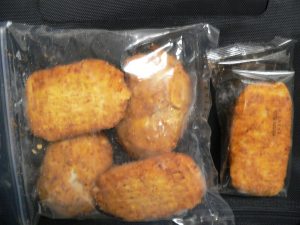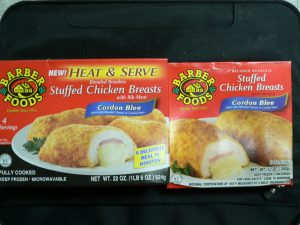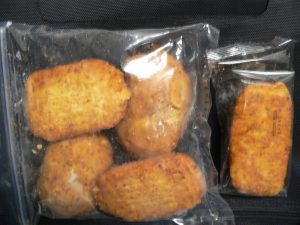In recent months, more than three hundred cases of salmonellosis have occurred in various European countries and Canada, which are linked to each other. In the UK the cases could be partly traced back to frozen breaded poultry meat. The cause was contamination with the bacterium Salmonella Enteritidis, which causes gastrointestinal inflammation. Salmonella is not killed by deep freezing and can remain infectious at temperatures below zero degrees Celsius. The Robert Koch Institute (RKI) and the BfR are monitoring the situation together with the Federal Office of Consumer Protection and Food Safety (BVL). In Germany, the number of reported cases has currently risen to more than 20 in six federal states. In 2020, there were a total of about 10,000 reported cases of salmonellosis in Germany, most of which were caused by the consumption of contaminated food. In principle, foodborne infections can be avoided by paying particular attention to hygienic care when preparing raw poultry.
 Due to the measures taken to contain the COVID 19 pandemic, people are currently cooking more often at home and, in the course of this, convenience products such as frozen goods are also being used more frequently. Sometimes it is not obvious at first glance whether such products contain pre-cooked or raw meat. Sufficient heating should always be ensured during preparation, especially of products containing raw poultry meat. In addition, bacterial contamination of other dishes via the raw meat and breading is possible. “Especially for children and elderly people there is a higher risk of getting sick from salmonella,” says BfR President Prof. Dr. Dr. Andreas Hensel.
Due to the measures taken to contain the COVID 19 pandemic, people are currently cooking more often at home and, in the course of this, convenience products such as frozen goods are also being used more frequently. Sometimes it is not obvious at first glance whether such products contain pre-cooked or raw meat. Sufficient heating should always be ensured during preparation, especially of products containing raw poultry meat. In addition, bacterial contamination of other dishes via the raw meat and breading is possible. “Especially for children and elderly people there is a higher risk of getting sick from salmonella,” says BfR President Prof. Dr. Dr. Andreas Hensel.
Investigations by the official food monitoring authorities show that raw poultry and poultry meat products – including frozen products – can be contaminated with pathogens. In 2018, Salmonella was found in 5.6% of chicken meat samples examined and Campylobacter bacteria in every second sample. For this reason, the BfR encourages adherence to its recommendations on the handling and preparation of poultry and poultry products.
It is true that germs such as salmonella and campylobacter are killed during the preparation of poultry meat if the correspondingly high temperatures are reached during cooking. But by transferring these germs to hands, household utensils and kitchen surfaces, other food can become contaminated with these pathogens. If this contaminated food is not reheated before consumption, one can fall ill. Since salmonella can multiply in food at temperatures above 7 °C, there is a particular risk when eating food that is kept unrefrigerated for a long time, such as salads and desserts.
Therefore, the following general hygiene rules should be strictly followed when preparing raw poultry:
– Store and prepare raw poultry products and other foods separately, especially when the latter are not reheated
– Store fresh poultry at a maximum of +4 °C and process and consume until the use-by date.
– Defrost frozen poultry without packaging in the refrigerator (cover and place in a bowl to collect the defrost water).
– Dispose packaging materials carefully and discard defrost water immediately.
– Do not wash poultry, as the splashing water can spread germs; it is better to process it directly or dab it with a paper towel, which should be disposed of directly.
– Utensils and surfaces that have come into contact with raw poultry products or defrost water must be cleaned thoroughly with warm water and washing-up liquid before further use.
– Clean hands thoroughly with warm water and soap between each preparation step.









